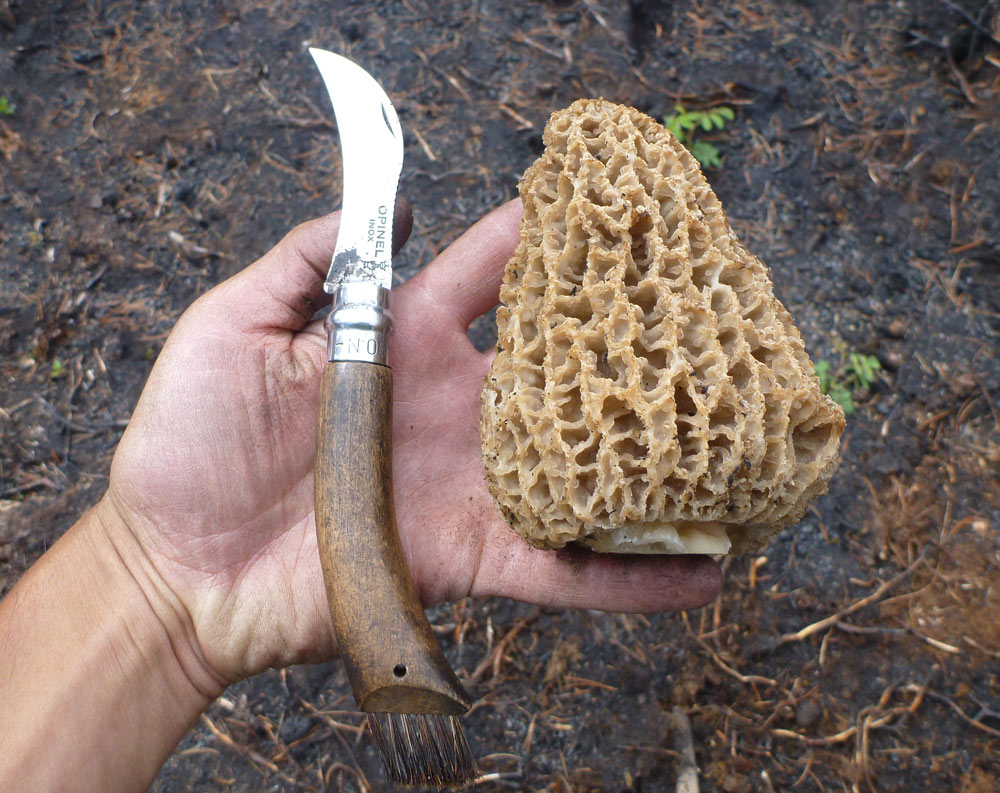No products in the cart
FAQ | HARVESTING PRACTICES
We believe in the power of world-changing foraged foods
Closed CSS
Where do you harvest your wild foods?
We harvest mainly on Vancouver Island, where we live and process our products. Our picking locations vary depending on which plants and mushrooms we’re foraging. There are plentiful wild foods and wild spaces in the Alberni Valley, where our facilities are based.
Our foraging spots are always in pristine environments far from busy roadsides. We make sure the wild food we pick is pollution-free: you can trust that our products are healthy and free of toxins and contaminants.
Morel mushrooms are currently an exception to our Island-based harvesting. Our morel harvest locations vary from year to year because we harvest them in the springtime, wherever wildfires occur the previous summer. Our morel spots are usually located somewhere in remote areas of Northern BC, the Yukon, Northern Alberta, or the Northwest Territories.
Are Forest for Dinner’s plants and fungi sustainably harvested?
That’s a sensitive question we take very seriously. Respect for the land is of utmost importance to us and our business. We’re not afraid to adapt and update our practices as new scientific discoveries and information evolve our understanding of the natural world.
Our foraging code of ethics
Here’s a summary of the guiding principles we follow for foraging wild foods. We also ask all independent harvesters with whom we
collaborate to follow these rules.
- We apply the ‘leave no trace’ principle
That means we collect our garbage and, whenever possible, we leave picking sites cleaner than we found them.
- We never overharvest
Think about sustainable harvesting like gardening in the wild: take only what you need, when you need it—this practice ensures that the next time you return to the same spot, new growth will be plentiful. For example, we don’t pick smaller or older mushrooms, giving them a chance to release their spores and participate in new establishments of mycelium. Over the years, this harvesting model has served both the plants and our foraging well— we’ve never had to stop harvesting an area due to overharvesting.
- We do our best not to disturb wildlife
Our simple harvesting practice involves going by foot to and from our patches, avoiding the use of noisy quads or motorcycles, and when we encounter wildlife, stepping back and letting them enjoy their natural home.
- We do not harvest BC’s endangered or threatened species
You can search on the BC Species & Ecosystems Explorer to find out more information on any species.
- We follow scientific research on wild harvesting
We avoid foraging myths and misinformation by keeping a close eye on scientific research papers on wild harvesting. Part of that means limiting our commercial harvesting to only bountiful plants, berries, and mushrooms.
When we doubt the sustainable harvest of a plant or fungus, we use keen observation and our ethics to help us determine whether to keep or abandon harvesting that particular plant.
- We keep an open dialogue and humility
Perhaps most importantly, we stay open to feedback and learning regarding our sustainability. Foraging is an ever-changing world with continuous discoveries, so our policy is to stay on top of things by adapting, educating ourselves, and correcting our practices when needed.
Who does the harvesting?
We recently moved into a modern new processing facility, The Dock+, to expand our capabilities and achieve our ultimate goal of making wild food more accessible to more people. With this in mind, we’ve increased our collaboration with other talented independent harvesters.
We take pride in offering fair compensation and respectful treatment for our local employees who help us bring you incredible wild foods. It’s all part of Forest for Dinner’s overall guiding principles around social justice. We’re also proud to help generate more income for the local economy while fostering a more circular economy.
How do you know which wild foods are safe to eat?
We have years of hands-on expertise identifying wild mushrooms, plants, and berries. In addition, Benjamin’s master’s degree in agroforestry allows for scientific research into the edibility of wild plants. As a result, we only harvest plants and fungi that we’re 100% certain are safely edible and have no history of health risks to healthy people.
In addition, we keep up-to-date with constantly evolving scientific research on wild edible plants and fungi. The safety and wellness of our customers and clients is one of our most essential priorities.
What’s the difference between wild and cultivated mushrooms?
Most wild mushrooms are ectomycorrhizal, which means they have a symbiotic relationship with a variety of plants. Despite the fact that scientists have been working for years to find a way to grow them, they have found no successful method. That is just one of the reasons why wild mushrooms are particularly precious!
How do you dry mushrooms?
How and where do you process your harvest?
Our standardized processing practices:
- After harvest, we check every foraged item to ensure they are free of contaminants like insects, branches, worms, and other unwanted species.
- We sort to eliminate lower-quality items and ensure maximum freshness.
- Our packaging methods preserve the flavours and textures of our delicate wild foods.

Do you have any questions about our practices or suggestions for how we can improve?
We’re always open to questions and feedback, so please feel free to contact us anytime.
